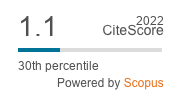Detección del área con desierto florido en el territorio del Mar de Dunas de Atacama, mediante percepción remota
DOI:
https://doi.org/10.4067/S0718-34022014000100008Keywords:
Dune Sea, blooming desert, tillandsias, satellite images, remote sensingAbstract
The Atacama Dune Sea is located northwest of Copiapó (27 ° S) and covers an area of 335 km2, constituting an "erg" whose morphology is very complex due to the influence of underlying valley and hill topography. The natural space environment corresponds to Caldera's marine terraces and inclined planes covered by aeolian mantles where desert blooms occur. The entire territory is part of the Atac-ama's geo-heritage, whose natural and scientific value is increased by the existent fog vegetation. Using satellite imagery and field surveys, we determined the spatial distribution of the blooming desert phenomenon and fog vegetation present in the Dune Sea area. Our results, in conjunction with the cartography generated, constitute a useful and necessary scientific basis for land use planning in this invaluable territory






